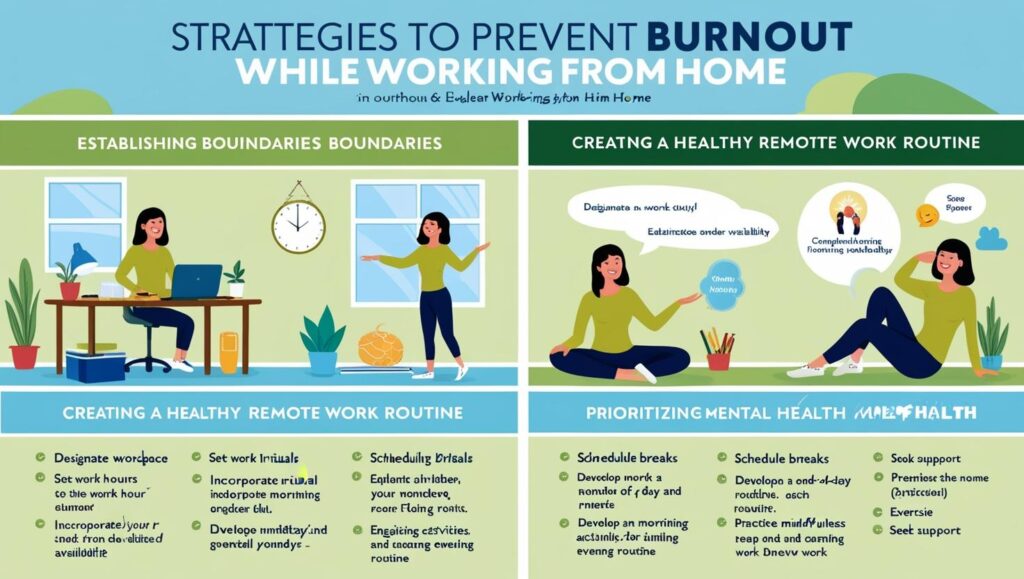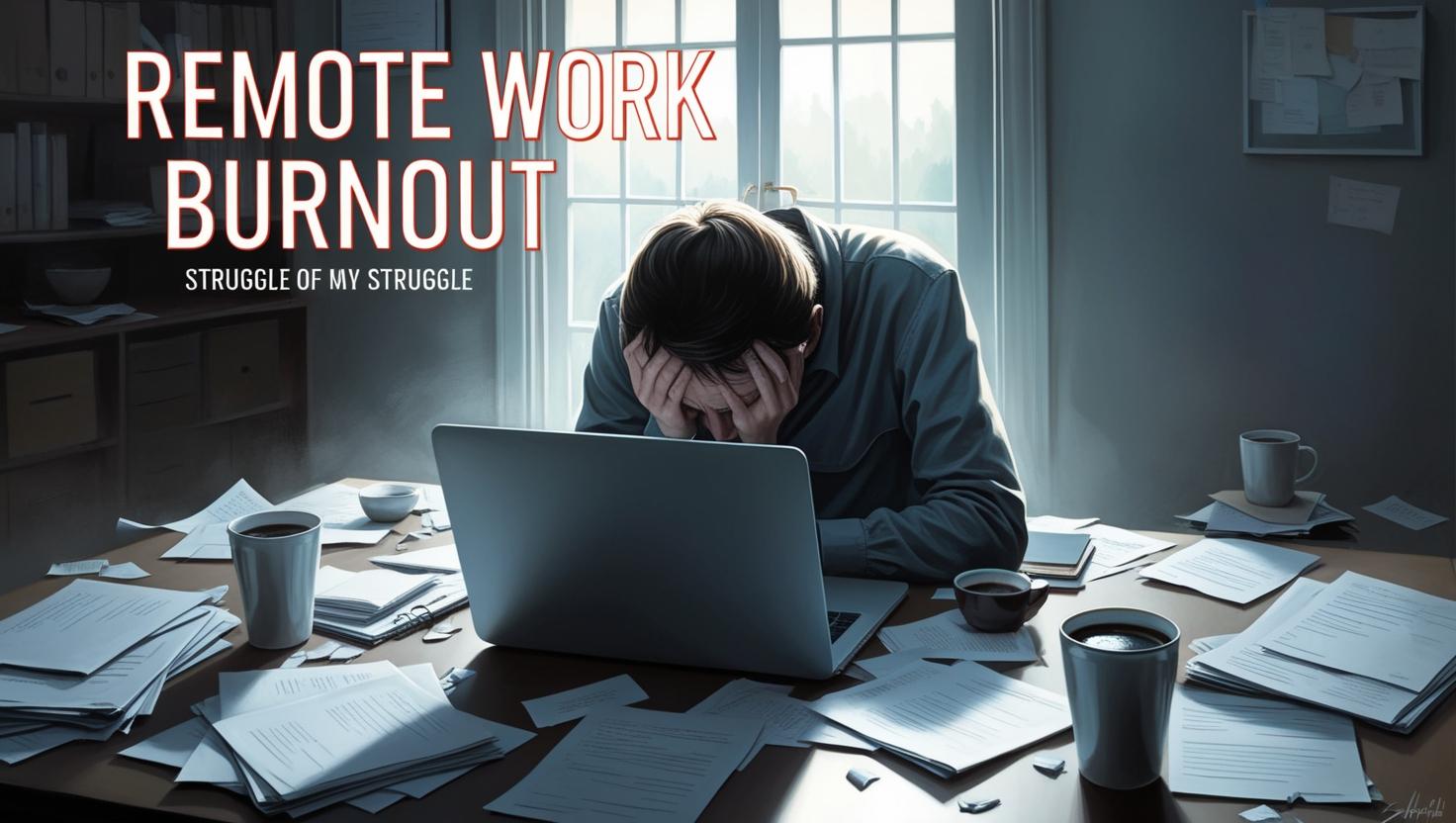
The shift to remote work has offered flexibility and convenience, but it has also blurred the lines between professional and personal life. This blurring can lead to remote work burnout, a state of physical, emotional, and mental exhaustion caused by prolonged stress and overwork in a home setting. Recognizing and addressing this burnout is crucial for maintaining productivity and overall well-being.
Understanding Remote Work Burnout
What is Remote Work Burnout?
Remote work burnout refers to the chronic stress and fatigue experienced by individuals working from home, often resulting from extended work hours, lack of social interaction, and difficulty separating work from personal life. Unlike traditional office burnout, remote work burnout is intensified by the absence of physical boundaries between work and home.
Causes of Remote Work Burnout
Several factors contribute to work from home burnout:
Lack of Boundaries: Without a clear separation between work and personal spaces, individuals may find themselves working longer hours.
Isolation: Reduced social interactions can lead to feelings of loneliness and detachment.
Overcommitment: The pressure to prove productivity can result in taking on excessive workloads.
Disrupted Routines: The absence of a structured schedule can lead to poor time management and increased stress.
Recognizing the Signs of Burnout
Identifying the signs of remote work burnout is the first step toward recovery.
Emotional and Mental Indicators
Chronic Fatigue: Persistent tiredness that doesn’t improve with rest.
Decreased Motivation: Lack of enthusiasm for work-related tasks.
Irritability: Increased frustration or mood swings.
Difficulty Concentrating: Trouble focusing on tasks or making decisions.
Physical Symptoms
Sleep Disturbances: Insomnia or oversleeping.
Headaches: Frequent tension headaches or migraines.
Digestive Issues: Stomach aches or changes in appetite.
Weakened Immune System: Increased susceptibility to illnesses.
Strategies to Prevent Burnout While Working from Home

Implementing proactive measures can help prevent burnout working from home.
Establishing Boundaries
Designate a Workspace: Set up a specific area in your home exclusively for work to mentally separate professional and personal activities.
Set Work Hours: Define clear start and end times for your workday to avoid overworking.
Communicate Availability: Inform colleagues of your working hours to manage expectations.
Creating a Healthy Remote Work Routine
Morning Rituals: Start your day with activities like stretching or meditation to prepare mentally for work.
Scheduled Breaks: Incorporate short breaks throughout the day to rest and recharge.
End-of-Day Routine: Develop a routine to signal the end of the workday, such as a walk or reading.
Prioritizing Mental Health
Mindfulness Practices: Engage in activities like meditation or deep breathing exercises to reduce stress.
Physical Activity: Regular exercise can improve mood and energy levels.
Seek Support: Connect with friends, family, or professionals to discuss feelings and challenges.
Reclaiming Your Work-Life Balance
Achieving a work-life balance in remote work is essential for long-term well-being.
Tips for Work-Life Balance at Home
Plan Personal Activities: Schedule time for hobbies and relaxation to ensure personal needs are met.
Limit Screen Time: Reduce exposure to screens outside of work hours to prevent digital fatigue.
Practice Self-Compassion: Acknowledge that it’s okay to take breaks and prioritize self-care.
Remote Work Mental Health Strategies
Regular Check-Ins: Assess your mental health periodically and make adjustments as needed.
Professional Help: Don’t hesitate to seek therapy or counseling if feelings of burnout persist.
Community Engagement: Participate in virtual or local communities to foster a sense of belonging.
Conclusion
Remote work burnout is a genuine concern that can impact both professional performance and personal well-being. By recognizing the signs early and implementing strategies to prevent burnout while working from home, individuals can maintain a healthy balance between work and life. Prioritizing mental health, establishing boundaries, and creating structured routines are key steps in reclaiming your work-life balance.
FAQs
1. What are the early signs of remote work burnout?
Early signs include chronic fatigue, decreased motivation, irritability, and difficulty concentrating.
2. How can I set boundaries while working from home?
Designate a specific workspace, define clear work hours, and communicate your availability to colleagues.
3. What are some effective remote work mental health strategies?
Engaging in mindfulness practices, regular physical activity, and seeking support from friends or professionals are effective strategies.
4. How can I create a healthy remote work routine?
Start with morning rituals, schedule regular breaks, and establish an end-of-day routine to separate work from personal time.
5. When should I seek professional help for burnout?
If feelings of burnout persist despite self-care efforts, it’s advisable to consult a mental health professional.
